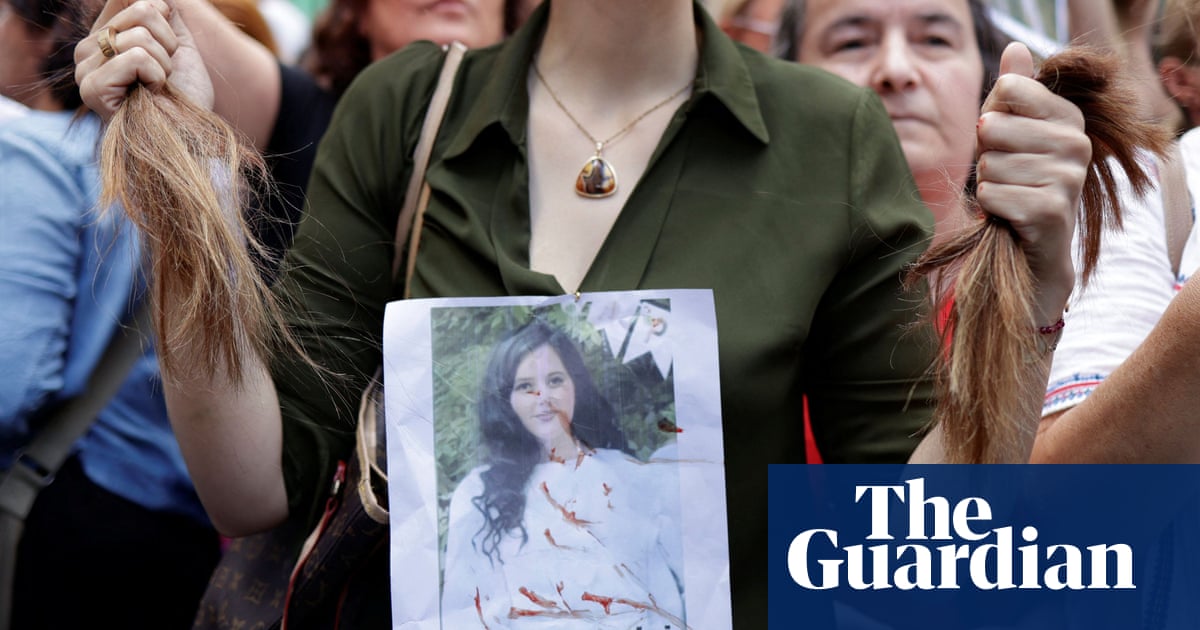
On the day that news of Mahsa Amini’s death spread throughout Iran, a young woman with a shaved head joined protesters who had gathered outside Kasra hospital, where Amini had lain in a coma since her violent arrest by Iran’s morality police days earlier.
In her hand she carried a plastic bag full of her long hair, shorn off in a gesture of solidarity with Amini and in defiance of the increasing crackdown on women by the regime.
A week later, and protests sparked by Amini’s death are raging in the province of Kurdistan and Tehran as well as cities such as Rasht, Isfahan and Qom, one of Iran’s most religiously conservative cities.
The rage across Iran at the brutal pointlessness of Amini’s death has lit the fires of protest and the increasing desperation of the authorities to extinguish it are, some believe, a sign of the growing strength and momentum of Iran’s women’s rights movement.
“Women’s issues have long been a catalyst for broader political action in Iran,” said Annabelle Sreberny, professor emeritus at the Iranian Studies Centre at Soas University of London. “This could be it. It could be the moment when people motivated by all the problems facing Iran today, like rising inflation, ecological crisis and lack of democratic participation, coalesce around these women’s issues to challenge the regime.”
During the past week women have been at the forefront of many of the demonstrations, shaving their heads and burning their headscarves in defiance of the strict hijab law and its brutal enforcement that led to 22-year-old Amini’s arrest and allegedly her death.
“The women’s movement in Iran started in the first month of the Islamic Republic and has been simmering for at least the last 20 years,” said Sreberny. “It is seen as a carrier of socially progressive values … many Iranians see the women’s movement as having the potential to be the next social force to make waves.”
Control of the female body and oppression of women is existential to the Islamic Republic
Women have always been key to challenging the regime. Since online blogging became a popular form of everyday dissent a decade ago, women and LGBTQ+ people have dominated the sphere. Today, some of the most significant anti-regime movements were created by women in cyberspace, including My Stealthy Freedom, a Facebook page launched in 2014 by an Iranian feminist journalist living in exile, Masih Alinejad, which encouraged women to post hijab-less selfies.
The public removal of the state-mandated hijab has since become a universal sign of rejection of the regime, unifying Iranians from across the religious spectrum. For months before Amini’s arrest and death, women had been converging under anti-hijab protest hashtags on social media, posting videos of themselves walking with their heads uncovered or being harassed on the streets. In the weeks before Amini’s arrest for failing to correctly wear the hijab, the authorities had carried out a spate of arrests, beatings and forced public confessions of women.
Among them was Sepideh Rashno, a 28-year-old woman who was detained after a video showing her on a bus with her hair uncovered went viral. Rashno was reportedly beaten during her detention and forced to apologise on national television.
“Control of the female body and oppression of women is not just a matter of policy of the current government,” said Azadeh Akbari, a researcher at the University of Twente in the Netherlands, “It is existential to the Islamic Republic and fundamental to its founding ideology.
“These are protests against the compulsory hijab and controlling women. They have support even among women who believe in Islam and who choose to wear it, but they don’t agree with the compulsory hijab and they definitely don’t agree with the violence which is used to enforce it,” said Akbari.
The hijab, a headscarf worn by Muslim women, became mandatory in Iran after the 1979 Islamic Revolution, which led to the overthrow of the shah and the instalment of Ayatollah Khomeini as the country’s supreme leader. Laws regulating women’s behaviour and restricting their participation in public life became a hallmark of the regime, as female liberation was presented as a force of western cultural imperialism.
Sign up for Her Stage to hear directly from incredible women in the developing world on the issues that matter to them, delivered to your inbox monthly:






